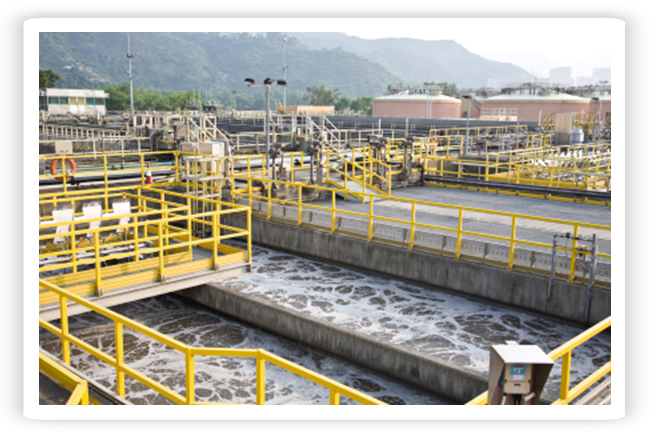
The slow dynamic of the activated sludge process is one of the main disadvantages for decision-making when problems arise. Whatever the measures you decide to take, their effects on the process will not be clearly seen for a few days. This fact makes it particularly important, on one hand, to detect problems as soon as possible and, on the other, to make the correct decisions right from the start. Nevertheless, it is not possible to assess the biological process with physical or chemical measurements; direct information is needed on the biomass and the effect the waste water to be treated has on it. The technique of respirometry enables us to evaluate, monitor and protect the activated sludge process as it provides information related to the condition or activity of the biomass.
Respirometry is based on the measurement of the speed with which oxygen is consumed by the bacteria when an organic or ammoniacal nitrogen substrate decomposes or the bacteria itself decomposes (endogenous respiration). The respiration rate (OUR) consists of the amount of oxygen consumed by the bacteria per unit of time and is expressed in mg O2/(L•h). As this parameter depends on the amount of microorganisms present in the sample, the specific respiration rate (SOUR) is usually used, which is the respiration rate divided by the amount of biomass in the sample. It is expressed in mg O2/(g•h) and its value depends only on the condition of the biomass and the amount and biodegradability of the substrate available.
Comparing the value of the specific respiration rate of the sample with the reference values (table), we can see whether the biological process is overloaded (there is too much substrate for so little biomass), operating with a good yield or, contrarily, there is evidence of toxicity symptoms. For the same waste water, a gradual increase in the specific respiration rate is indicative of an increase in the biological activity, and vice versa.
Apart from being able to find out the health and current capacity of the activated sludge process and the toxic nature of the waste water for microorganisms through respirometry, this technique also enables us to:
- Optimize the aeration and thus encourage energy savings at the plant. By means of respirometry the real oxygen needs can be accurately determined for a waste water and with a certain biomass.
- Characterize the water to be treated according to its biodegradability due to the activated sludge. We can find out the COD fractioning of the water to be treated according to whether it is quickly biodegradable, gradually biodegradable or not biodegradable. This characterization is very useful for evaluating and adjusting the process.
- Detect industrial effluents with inhibitory or toxic effects on the biomass. Respirometry enables us to detect the harmful effects of the waste water on the microorganisms just when it is starting to affect them, enabling us to take measures to alleviate the effects caused.
- Optimize the process of nitrification/denitrification. It enables us to determine the real nitrification rate and the real denitrification rate of our process. Based on these values we can readjust the age of the sludge.
- Analyze the ratio of nutrients (C:N:P) in the waste water. The fact that the essential nutrients are not in the waste water in the proportion that the microorganisms need them causes a number of negative effects on the stability of the activated sludge process. Using respirometry we can detect whether the nutrient ratio in the water is reducing the biological activity and causing problems.
- Determine kinetic parameters, necessary for modeling the process. By means of respirometry we can determine parameters such as the heterotrophic biomass yield coefficient, the rate of use of the COD, the rate of nitrification, etc.
Thus, respirometry is a simple and practical technique that provides direct information on the biomass. It enables us to anticipate the majority of problems that can affect the process, guaranteeing that right from the start the correct measures are taken to alleviate the problem. Similarly, also it is an indispensable instrument for optimizing the process and determining essential parameters for its modeling.